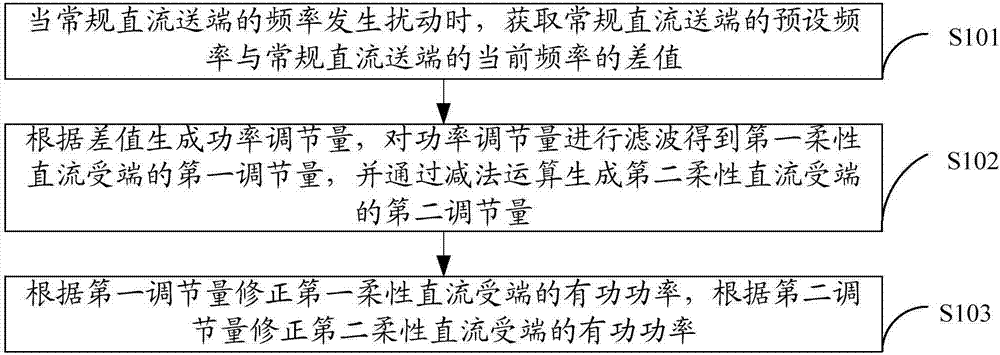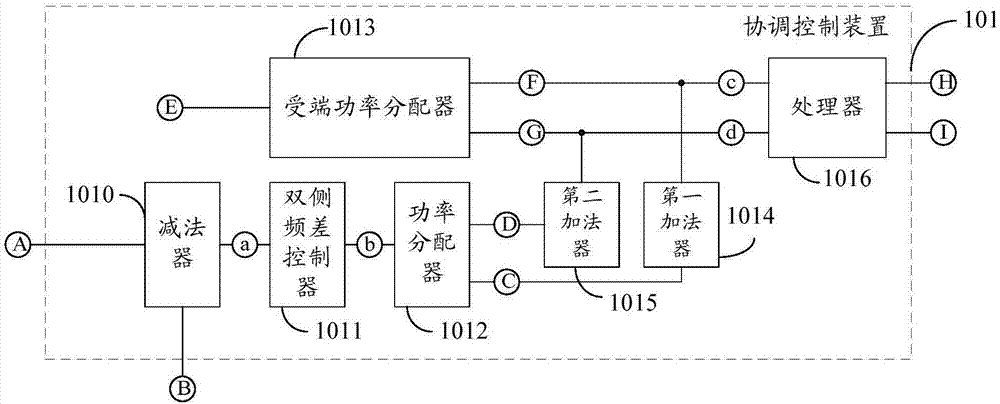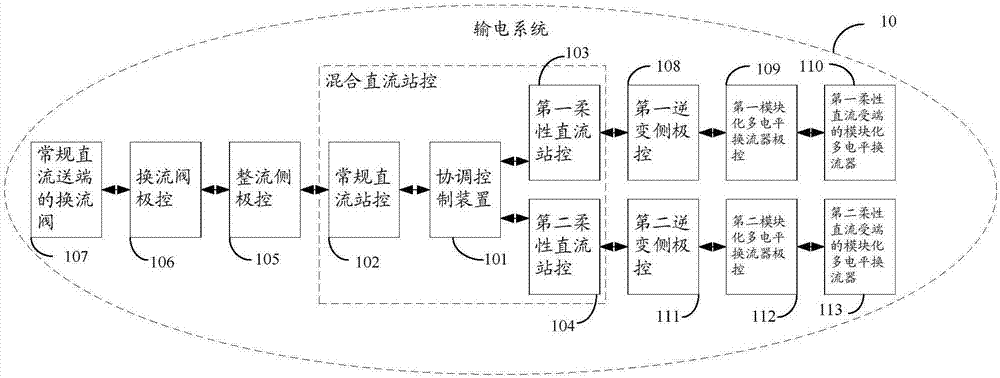Hybrid direct current station control coordination control method and device and power transmission system
A technology of coordinated control and hybrid DC, applied in the direction of reducing/preventing power oscillation, which can solve problems such as inability to allocate a reasonable amount of power modulation
- Summary
- Abstract
- Description
- Claims
- Application Information
AI Technical Summary
Problems solved by technology
Method used
Image
Examples
Embodiment 1
[0028] Embodiment 1. The embodiment of the present invention provides a coordinated control method for hybrid DC station control, such as figure 1 Shown include:
[0029] S101. When the frequency of the conventional DC sending end is disturbed, obtain the difference between the preset frequency of the conventional DC sending end and the current frequency of the conventional DC sending end.
[0030] S102. Generate a power adjustment amount according to the difference, filter the power adjustment amount to obtain the first adjustment amount of the first flexible DC receiving end, and generate a second adjustment amount of the second flexible DC receiving end through subtraction, wherein the second adjustment amount is equal to The power adjustment amount minus the first adjustment amount.
[0031] It should be noted that the first adjustment amount may be equal to the second adjustment amount or the first adjustment amount may be different from the first adjustment amount.
[...
Embodiment 2
[0049] Embodiment 2. The embodiment of the present invention provides a coordinated control device 101 for hybrid DC station control, such as figure 2 Shown include:
[0050] The subtractor 1010, the first node a connected to the subtractor 1010, the first signal input terminal A and the second signal input terminal B, the double-sided frequency difference controller 1011 connected to the first node a, and the double-sided frequency difference control The second node b connected to the device 1011, the power divider 1012 connected to the second node b, the first signal output terminal C and the second signal output terminal D connected to the power divider 1012; the subtractor 1010 is used for conventional When the frequency of the DC sending end is disturbed, the difference between the preset frequency of the conventional DC sending end and the current frequency of the conventional DC sending end is obtained; the double-sided frequency difference controller 1011 is used to g...
Embodiment 3
[0055] Embodiment 3. The embodiment of the present invention provides a power transmission system 10, including: any coordination control device 1011 for hybrid DC station control provided in Embodiment 2, connected to the coordination control device 1011 for hybrid DC station control Conventional DC station controller 102, first flexible DC station controller 103 and second flexible DC station controller 104, rectification side pole controller 105 connected to conventional DC station controller 102, converter valve pole controller 106 connected to rectification side pole controller 105 , the conventional DC sending end converter valve 107 connected to the converter valve pole controller 106, the first inverter side pole controller 108 connected to the first flexible DC station controller 103, the first inverter side pole controller 108 connected to the first inverter side pole controller 108 A modular multilevel converter pole control 109, a modular multilevel converter 110 at...
PUM
 Login to View More
Login to View More Abstract
Description
Claims
Application Information
 Login to View More
Login to View More - R&D
- Intellectual Property
- Life Sciences
- Materials
- Tech Scout
- Unparalleled Data Quality
- Higher Quality Content
- 60% Fewer Hallucinations
Browse by: Latest US Patents, China's latest patents, Technical Efficacy Thesaurus, Application Domain, Technology Topic, Popular Technical Reports.
© 2025 PatSnap. All rights reserved.Legal|Privacy policy|Modern Slavery Act Transparency Statement|Sitemap|About US| Contact US: help@patsnap.com



